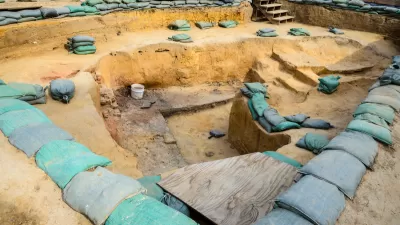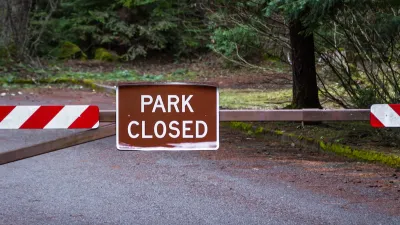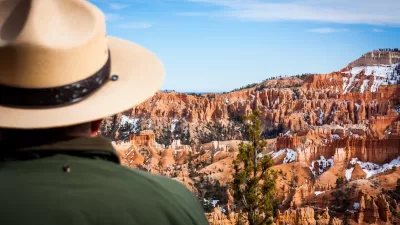Threats facing major U.S. cultural sites today include development, drilling, and the federal government.

The Cultural Landscape Foundation has issued its annual "Landslide" list of the nation's precious sites most threatened by "confiscation, development, energy and resource extraction, and other incompatible uses."
The 2017 edition, "Open Season on Open Space," includes 12 sites across the country, plus one listing that encompasses all areas potentially impacted by the ongoing federal review of national park designations. The Architect's Newspaper explains:
This year’s thirteen sites were organized based on five themes: “monetization of open space,” in which parks come under pressure to generate profit; “resource extraction,” which is under particular attack by Secretary of the Interior Ryan Zinke, who proposed relaxing management rules for six monuments, exposing them to mining and logging; “park equity,” charging to use parks or converting them to sport and cultural venues; “detrimental effects of shadow,” where the surrounding development is built up to the point where the park no longer receives adequate light; and “the devaluation of cultural lifeways,” in which ancestral lands and other sites of cultural significance are threatened.
TCLF also maintains an online database of notable cultural landscapes throughout the U.S.
FULL STORY: The Cultural Landscape Foundation announces threatened landscapes of 2017

Trump Administration Could Effectively End Housing Voucher Program
Federal officials are eyeing major cuts to the Section 8 program that helps millions of low-income households pay rent.

Planetizen Federal Action Tracker
A weekly monitor of how Trump’s orders and actions are impacting planners and planning in America.

Ken Jennings Launches Transit Web Series
The Jeopardy champ wants you to ride public transit.

Washington Legislature Passes Rent Increase Cap
A bill that caps rent increases at 7 percent plus inflation is headed to the governor’s desk.

From Planning to Action: How LA County Is Rethinking Climate Resilience
Chief Sustainability Officer Rita Kampalath outlines the County’s shift from planning to implementation in its climate resilience efforts, emphasizing cross-departmental coordination, updated recovery strategies, and the need for flexible funding.

New Mexico Aging Department Commits to Helping Seniors Age ‘In Place’ and ‘Autonomously’ in New Draft Plan
As New Mexico’s population of seniors continues to grow, the state’s aging department is proposing expanded initiatives to help seniors maintain their autonomy while also supporting family caregivers.
Urban Design for Planners 1: Software Tools
This six-course series explores essential urban design concepts using open source software and equips planners with the tools they need to participate fully in the urban design process.
Planning for Universal Design
Learn the tools for implementing Universal Design in planning regulations.
Heyer Gruel & Associates PA
Ada County Highway District
Institute for Housing and Urban Development Studies (IHS)
City of Grandview
Harvard GSD Executive Education
Toledo-Lucas County Plan Commissions
Salt Lake City
NYU Wagner Graduate School of Public Service





























